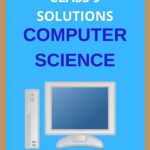Class 9 Computer Science Chapter 11 Case Studies Applications of it in Daily Use Question Answer, Computer Science Class 9 Solutions, NCERT Class 9 Computer Science Chapter 11 Case Studies Applications of it in Daily Use Question Answer for each chapter is provided in the list so that you can easily browse throughout different chapters SCERT Class 9 Computer Science Chapter 11 Case Studies Applications of it in Daily UseSolutions and select needs one.
Class 9 Computer Science Chapter 11 Case Studies Applications of it in Daily Use
Also, you can read the SCERT book online in these sections Solutions by Expert Teachers as per SCERT (CBSE) Book guidelines. NCERT Solution of Class 9 Computer Science Chapter 11 Case Studies Applications of it in Daily Use is part of AHSEC All Subject Solutions. Here we have given Class 9 Computer Science Chapter 11th Case Studies Applications of it in Daily Use Notes for All Subjects, You can practice these here in SEBA Class 9 Computer Science.
Case Studies Applications of it in Daily Use
Chapter – 11
COMPUTER SCIENCE
1. DISCUSSION OF DIFFERENT CAREER OPTIONS AND OPPORTUNITIES IN INFORMATION TECHNOLOGY.
There are various IT career options, You can choose.
Below is the list of careers in IT along with their job profile.
1. Support Specialist: They provide technical support to organizations by managing, maintaining, and troubleshooting their IT systems and communicating with co-workers to diagnose problems. They prioritize a workload to ensure the most critical issues are resolved first and document standard support procedures that co-workers may follow.
2. Computer Programmer: Computer programmers write, modify, and test code and scripts that allow computer software and applications to function properly. They turn the designs created by software developers and engineers into instructions that a computer can follow.
3. Web Developer: Web developers design and build websites. They are typically responsible for the appearance, of the site and technical aspects, such as site speed and how much traffic the site can handle. Web developers may also create site content that requires technical features.
4. IT Technician: An IT Technician is a professional who is responsible for installing, maintaining, and repairing hardware & software components of the organization’s computers. They also support these systems through remote access or site visits as needed by management teams within their company.
5. System Analyst: Evaluating current IT systems, including hardware, software, and network features. Communicating with management and employees to determine system requirements. Planning new systems that address any issues with the current systems.
6. Network Engineer: A Network Engineer job description can therefore comprise of Designing and implementing new network solutions and/or improving the efficiency of current networks. Installing, configuring, and supporting network equipment including routers, proxy servers, switches, WAN accelerators, DNS, and DHCP.
7. Database Administrator: Database Administrators ensure that the databases run efficiently and securely. For example, they create or organize systems to store different data types, such as financial information and customer shipping records. They also make sure authorized users can access this information when needed.
8. Web Administrator: Web administrators design, develop, maintain and troubleshoot websites. Most importantly, they ensure a safe and efficient user experience. This may include implementing security protocols, modifying programs, creating backups, resolving software problems, updating content and more.
9. IT Coordinator: The IT Coordinator is a professional responsible for maintaining and managing information technology systems and networks within an organization. They ensure the functionality and efficiency of computer and telecom systems by establishing protocols, providing technical support, and advising on IT choices.
10. Data Entry Operator: Prepares, compiles, and sorts documents for data entry. Verifies and logs receipt of data. Transcribe source data into the required electronic format. Transfers information from paper formats into computer files using keyboards, data recorders, or optical scanners.
11. Data Scientist: A Data Scientist is a proficient specialist who applies mathematical, problem-solving, and coding skills to manage big data, extracting valuable insights. They design tailor-made solutions from this data, aiding organizations in achieving their unique objectives and goals.
12. Software engineering: A Software Engineer is an IT professional who designs, develops, and maintains computer software at a company. They use their creativity and technical skills and apply the principles of software engineering to help solve new and ongoing problems for an organization.
13. Data Analyst: Interpreting data, and analyzing results using statistical techniques. Developing and implementing data analyses, data collection systems, and other strategies that optimize statistical efficiency and quality.
14. Computer Repair Technician: Maintaining hardware and software by conducting regular maintenance and updates. Identifying and resolving network, connectivity, and server issues. Upgrading firmware, software, and outdated hardware systems. Monitoring and maintaining security systems and installing updates.
15. Product Management: The Product Manager is responsible for product planning, delivery, and marketing throughout the product lifecycle. They will develop a vision and roadmap for the product based on input from internal stakeholders, customers, market research, and their own industry insight.
2. MAKING YOUR BIODATA IN MS-WORD
For writing biodata, Dev has to use word processing software like MS Word, Libre Writer, etc.
Dev has to keep the following points for writing the biodata:
- Choose the right software to create the biodata.
- Add a header.
- Write the title.
- State your objective.
- Add your work experience.
- Mention your educational qualifications.
- Add your key skills and certificates.
- Note your hobbies and interests.
A sample of a biodata has been given below so that Dev can follow.

3. CREATING A BROCHURE FOR YOUR SCHOOL IN MS-WORD.
A sample of a brochure is given below:

4. CREATING REPORT CARD IN MS EXCEL.
A sample of the report card is shown below:

5. CREATING A PRESENTATION IN MS- POWERPOINT WITH BIOGRAPHY OF GREAT PERSONALITIES OF INDIA.
Sample of the presentation in Microsoft PowerPoint.


Hi, I’m Dev Kirtonia, Founder & CEO of Dev Library. A website that provides all SCERT, NCERT 3 to 12, and BA, B.com, B.Sc, and Computer Science with Post Graduate Notes & Suggestions, Novel, eBooks, Biography, Quotes, Study Materials, and more.




